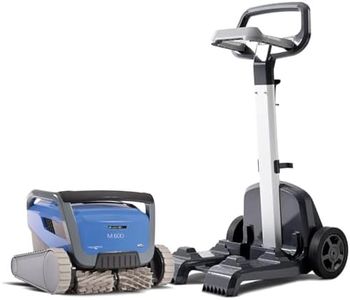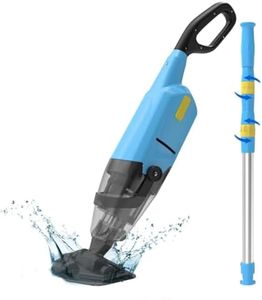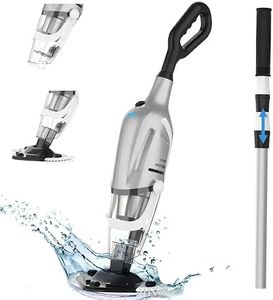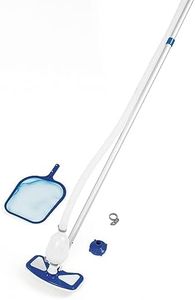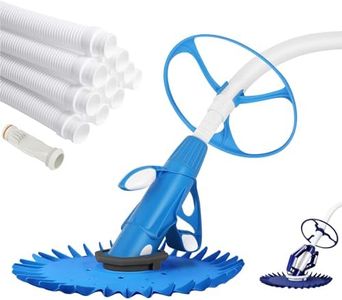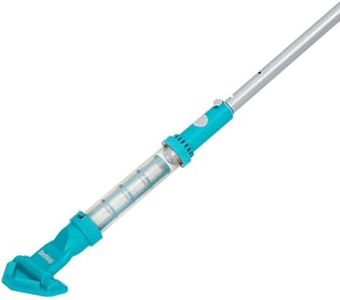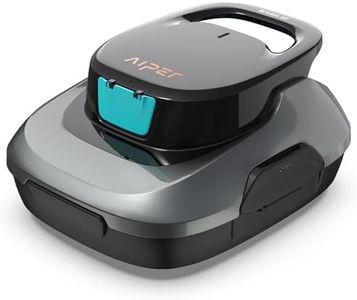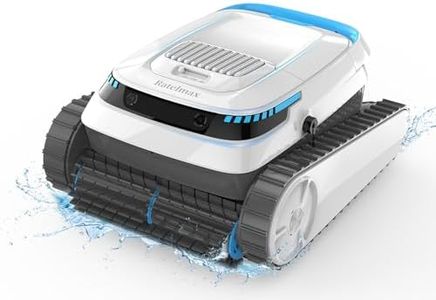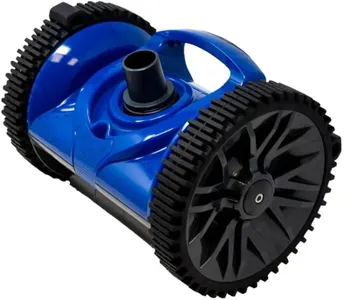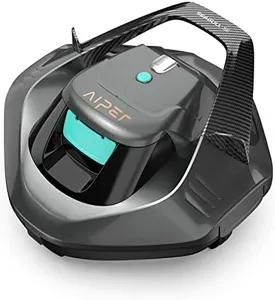We Use CookiesWe use cookies to enhance the security, performance,
functionality and for analytical and promotional activities. By continuing to browse this site you
are agreeing to our privacy policy
10 Best Above Ground Pool Cleaners
From leading brands and best sellers available on the web.By clicking on a link to a third party's website, log data is shared with that third party.
Buying Guide for the Best Above Ground Pool Cleaners
Choosing the right above-ground pool cleaner can make pool maintenance much easier and help keep your pool sparkling clean all season. Start by thinking about how often your pool gets dirty, the type of debris you usually have, and how much time you want to spend managing the cleaning process. Different cleaners suit different pool sizes, shapes, and surface types. Understanding what each key specification means will help you match a cleaner to your pool's needs and your preferences for convenience.Cleaner TypeCleaner type refers to the main method the device uses to clean your pool—typically, manual, suction-side, pressure-side, or robotic. Manual cleaners require you to do the work, while suction and pressure models attach to your pool’s circulation system. Robotic cleaners are self-contained, automatic machines. If you enjoy hands-on work or have a small pool, a manual cleaner may be just fine. If you want more convenience, consider automatic types. Suction or pressure cleaners are good for regular debris, but robotic cleaners offer the most ease and effectiveness, especially if you want a set-it-and-forget-it solution.
Pool Compatibility (Size and Shape)This spec is about whether the cleaner will work well with your pool’s size, depth, and shape. Some cleaners perform best in round pools, while others handle oval or rectangular shapes just as well. Lightweight models can have trouble in bigger or deeper pools, while some only work with pools up to a specific size. To choose the right one, know your pool’s measurements and pick a cleaner rated for slightly more than your pool’s size to ensure thorough cleaning.
Debris HandlingDebris handling refers to the kind and amount of dirt, leaves, and particles a cleaner can manage. Some cleaners are better for large debris, like leaves, while others are more effective with fine dirt and sand. Consider the typical debris in your pool—trees nearby mean more leaves, while dusty areas might leave finer particles. Pick a cleaner designed for your most common debris to ensure your pool is properly cleaned.
Filtration SystemThe filtration system describes how a cleaner collects and holds debris. Some cleaners rely on your pool’s filter, while others have their own filter bags or cartridges. Cleaners with built-in filtration keep things out of your pool’s system, reducing filter maintenance. Larger or easily emptied collection units are better if you get a lot of debris. Think about how often you want to empty the filter and how much debris your pool usually has to select the best type for you.
Power SourceThis spec tells you how the cleaner operates—whether it uses your pool’s pump, is electrically powered, or runs by hand. Manual and suction-side cleaners use pool system power, robotic cleaners are plugged into an outlet, and battery-powered models offer more flexibility. Pools with strong pumps may handle suction models easily, while those who don’t want to deal with hoses or cords might prefer battery or robotic options. Match the power source to your willingness to set up equipment and your pool’s compatibility.
Ease of Use and MaintenanceEase of use describes how simple it is to set up, operate, and maintain the cleaner. Some models require hoses and complex assembly, while others are simply dropped in. Maintenance refers to cleaning the filter or brushes and routine upkeep. If you want to spend less time with your pool cleaner, look for models marketed as simple or tool-free to maintain. Those willing to do more upkeep might be comfortable with more complex machines.
